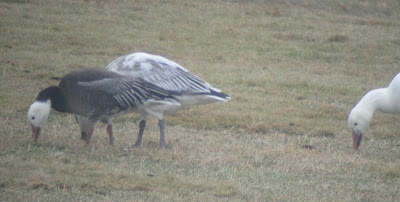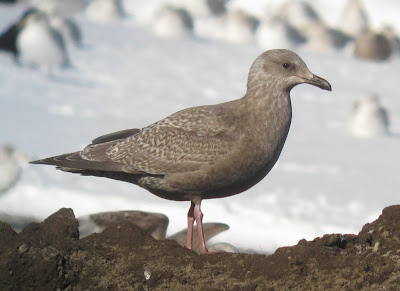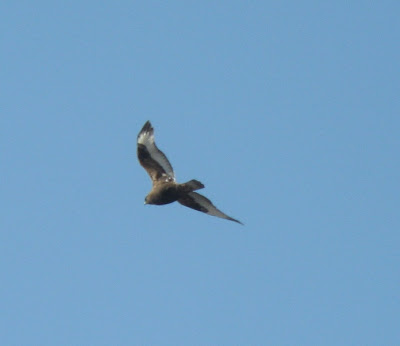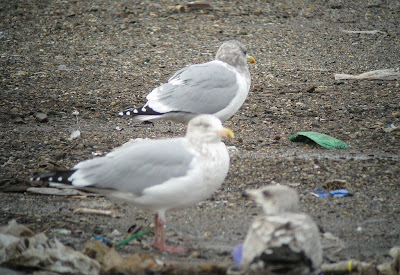Dec 27 - Greater and Lesser Snow Geese?

A small flock of 6 Snow Geese were present at Seaside Pk on the 27th while I was doing a bit of scouting for the Stratford-Milford CBC. The group consisted of two adults (one blue, one white) and four immatures (all white). The blue goose was clearly the smallest of the bunch. Reportedly "Blue" Geese are much more common among Lesser Snows than Greaters. I think this blue goose is likely a Lesser Snow Goose, but I haven't really done much research yet on separating the two forms. It also crossed my mind that this could be a family group, given that two adults and four young birds are present. Any comments would be welcome. - Nick






